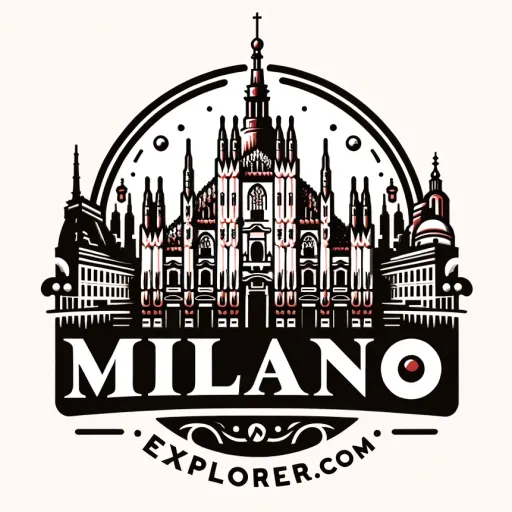Milan’s street food scene provides a delectable window into the city’s rich culinary culture, where traditional flavors meet contemporary innovation. As we wander through the bustling streets of this fashion-forward Italian city, we’re greeted by an array of aromatic delights, from savory paninis to sweet pastries. The sizzle and scent of freshly prepared bites beckon us to experience the city’s heritage in a new and exciting way. Every bite tells a story of Milan’s history and the creativity that fuels its gastronomic offerings.
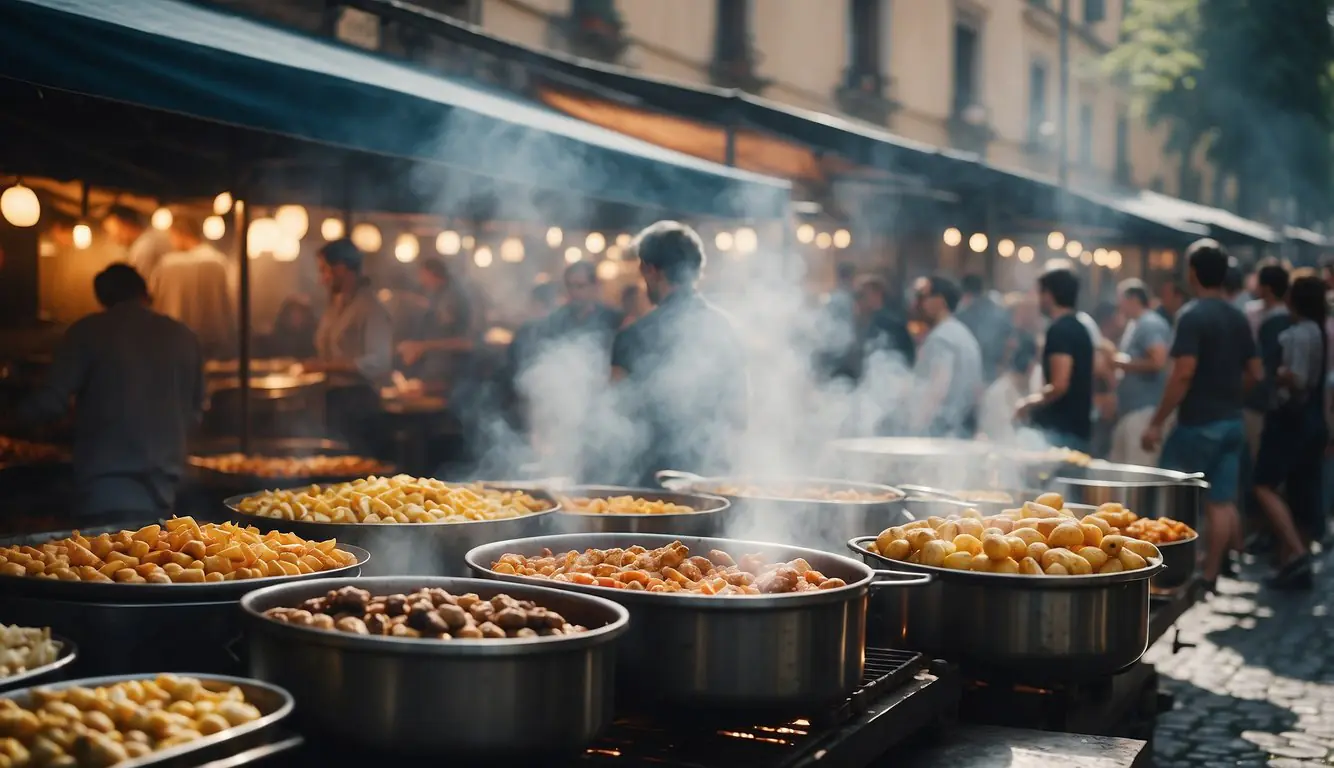
Our journey through the streets of Milan reveals more than just the convenience of on-the-go eating; it’s a reflection of Milan’s global stature both in design and dining. With a fusion of fashion and food, we encounter Milanese staples like the iconic Panzerotto and innovative dishes born from a blend of international influences. The street food experience in Milan does not only tantalize the taste buds but also stands as a testament to the city’s evolutionary spirit in the kitchen and beyond. It is in these humble street eateries and kiosks that Milan’s heart truly beats, offering an authentic taste of the city’s dynamic food landscape.
Milan Street Food Scene
Key Takeaways
- Milan’s street food encapsulates the essence of its culinary heritage and innovative spirit.
- The intertwining of fashion and food in Milan emerges not only in restaurants but also on the streets.
- Street food in Milan offers both traditional Milanese delicacies and inventive global cuisine.
History and Culture of Milan Cuisine
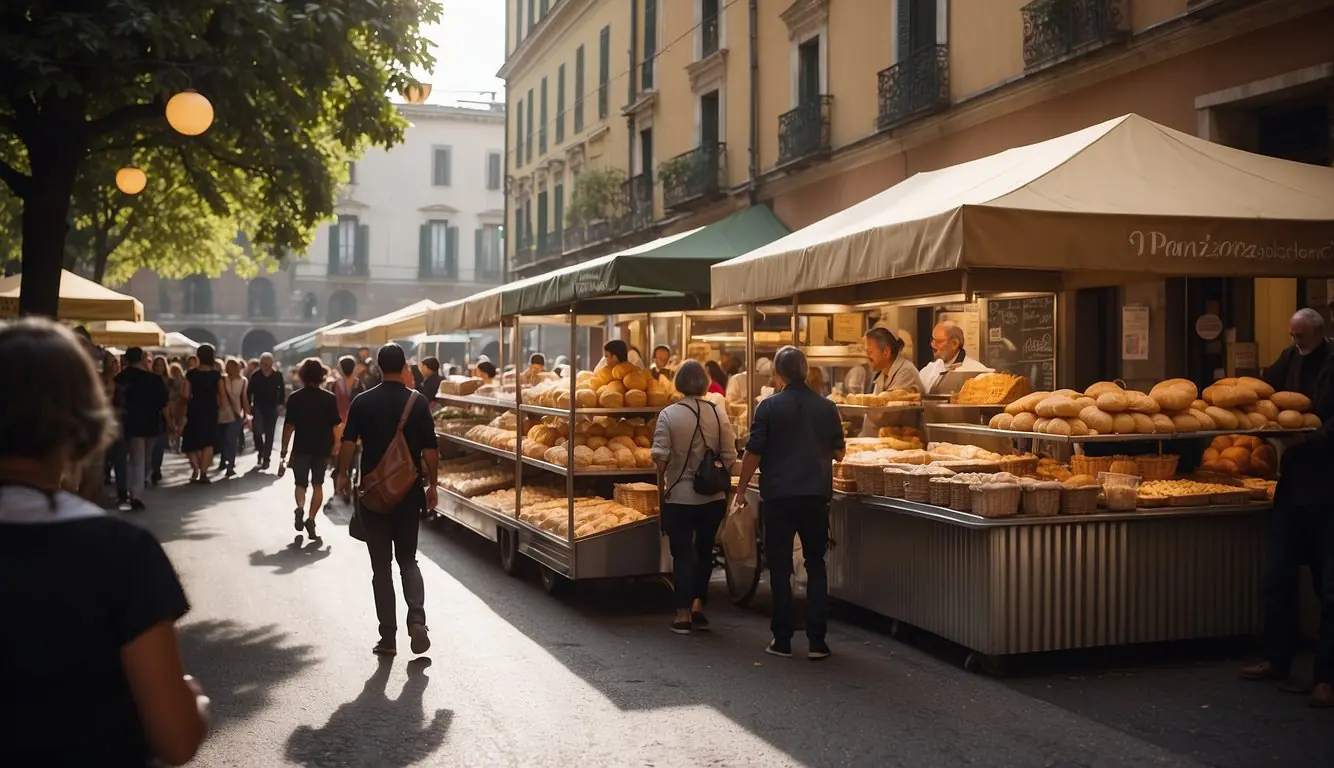
Cuisine in Milan reflects its rich history and the broad regional influences of Lombardy. We’ll explore how traditions have shaped the local gastronomy and how the region’s resources contribute to its distinctive flavors.
The Roots of Milanese Food Traditions
Milanese cuisine, alla milanese, has evolved over centuries, integrating culinary practices from the various civilizations that ruled the city. An iconic example is the saffron-infused Risotto alla Milanese. This dish’s deep yellow hue and creamy texture reflect the sophisticated palates of Milan’s aristocracy, symbolizing the opulence of the city’s past. The influence of foreign dominions brought ingredients like rice to the forefront of Milan’s culinary tradition.
Influence of Lombardy Region on Milanese Cuisine
The plentiful waters and fertile plains of the Lombardy region have consistently bolstered Milan’s gastronomy. Ingredients like butter, buckwheat, and freshwater fish play starring roles in regional dishes. The agricultural prowess of Italy’s northern heartland has rendered Lombardy a provider of rich dairy products for Milanese recipes. Traditional cheeses such as Gorgonzola, Taleggio, and Grana Padano have roots here, each contributing unique flavors to the Milan street food scene.
Key Ingredients in Milanese Cooking
In Milanese cuisine, the abundance of fresh ingredients and locally sourced produce defines the rich and varied flavors we encounter in every dish.
Staple Components of Milanese Dishes
The backbone of traditional Milanese dishes often includes risotto alla milanese, a creamy rice dish that owes its vibrant golden color and rich flavor to saffron. Notably, beef bone marrow is another key component that imparts a distinct richness to the risotto, making it a cherished recipe in Milan’s gastronomy.
The use of cheese, particularly Gorgonzola, is prevalent as well. This blue cheese, with its unique and sharp taste, is an essential element in numerous Milanese recipes, from risottos to polenta dishes. Furthermore, Milanese cotoletta, or breaded veal cutlet, though simple in its ingredients, is renowned for its crispy golden breading and juicy interior.
Cheeses like mozzarella and parmigiano-reggiano enhance the flavors of various Milanese dishes, offering textures that range from the creamy gooeyness of melted mozzarella to the granular crunch of parmigiano shavings.
Ham, particularly in the form of prosciutto, often finds its way into the cuisine, offering a salty contrast that compliments the region’s love for dairy. Tomato sauce, simple yet profound in its flavor, is made with ripe tomatoes, olive oil, and salt, playing a crucial role in many pasta dishes.
Locally Sourced Freshness
We focus on integrating locally sourced vegetables and olive oil to create the basis for nutritious and flavorful meals. This emphasis on field-to-fork freshness is more than a trend; it’s a long-standing Milanese tradition. The nearby fertile plains of Lombardy provide an abundance of tomatoes, water, and other vegetable staples that infuse dishes with the pure taste of the region.
Milan’s access to local cattle farms allows for the inclusion of high-quality beef in traditional cooking, which is revered for its tenderness and flavor. The combination of these ingredients results in a cuisine that is both grounded in its regional identity and celebrated for its culinary excellence.
The Experience of Street Food in Milan
Milan offers an array of street-side flavors, from the quintessential panzerotti to the rich cotoletta alla milanese. We’ll take you on a culinary stroll through Milan’s animated street vending locales and share the must-try delights that define this city’s sidewalk cuisine.
Navigating Milan’s Vibrant Street Food Scene
Venturing through Milan’s street food scene is like unraveling a tapestry of taste and tradition. To start, Chinatown presents a variety of aromas and tastes, with dumplings and diverse Asian snacks vying for your attention. A taste of Ravioleria Sarpi‘s delicate offerings exemplifies Milanese street food influenced by far-off lands. As you explore, keep an eye out for the bustling food trucks and compact kiosks, each offering their unique version of Milanese rapid cuisine.
While sandwiches, commonly known as panini, may be a familiar street food, Milan puts a creative spin on them with local cold cuts, herbs, and olives. A simple panino could unveil the complexity of Milan’s gastronomy; it’s not just a sandwich but a canvas showing off the region’s finest produce.
Signature Street Eats to Try in Milan
Our journey through Milan must include specific signature eats. Panzerotti, a savory turnover that is fried or baked, is filled with a variety of ingredients, but you can’t go wrong with the classic tomato and mozzarella. A bite into a hot panzerotto reveals a melty heart and a quintessential Milanese indulgence.
Focaccia, another staple, takes on a Milanese twist when topped with rosemary or sage alongside olives and onions. When savoring a slice, the crackling of the crust and the smell of fresh herbs confer a momentary trip to an Italian kitchen.
One cannot talk about Milan’s street food without mentioning cotoletta alla milanese – a Milanese icon. Savor this perfectly fried, golden breaded veal cutlet, traditionally served with a wedge of lemon to cut through the richness.
Finally, we uncover a street eat that surprises many: burger. While not traditionally Italian, Milan has embraced the classic burger with open arms, often giving it a local revamp with ingredients like gorgonzola cheese or fresh rocket.
As you weave through the streets lined with bustling kiosks and aromatic stalls, it’s clear that street food in Milan is about discovery and pleasure, where every bite tells a story of this stylish city‘s culinary zest.
Sit-Down Dining: Milan’s Restaurants and Delis
We find that the Milan dining scene is as diverse as it is rich, offering a myriad of options from the cozy family-run trattorias to the contemporary urban eateries. Whether you’re seeking the traditional flavors of local cuisine, a gourmet burger, or an exquisite glass of wine, Milan’s restaurants and delis cater to every palate.
From Family-Run Trattorias to Fine Dining
Delving into the heart of Milan, we encounter traditional family-run trattorias, which have been serving locals for generations. These establishments proudly offer a taste of regional home-cooked meals. For an authentic Italian dining experience, one might visit Meucci, where pizzas are celebrated for their authentic taste and the atmosphere is friendly.
On the other end of the spectrum, we see fine dining venues that blend sophisticated culinary techniques with Milanese tradition. Nestled near the Duomo, Michelin-starred restaurants present innovative flavors while encapsulating Milan’s architectural beauty within the dining experience, offering unrivaled views of the city’s historic cathedral.
A Journey Through Milan’s Gastronomic Offerings
Our culinary journey through Milan wouldn’t be complete without appreciating the diverse array of gastronomic offerings scattered throughout the city. The vibrant district of Brera offers a mix of quaint cafes and upscale dining, perfect for those who enjoy the arts with their meal.
In the Porta Romana area, a blend of old and new is found in contemporary delis serving gourmet takes on Italian classics. Additionally, the food trucks and kiosks that dot Milan serve as an introduction to the innovative street food scene, which is not to be missed for a more casual dining venture.
Meanwhile, for those who find joy in the interplay of food and beverages, a visit to wine bars reveals a sophisticated selection, with sommeliers ready to pair the perfect vintage with gourmet bites.
Across all these experiences, it is the keen attention to high-quality ingredients and the dedication to flavor that unites Milan’s sit-down dining culture. Whether at a busy deli, a serene restaurant overlooking historic monuments, or a bustling gourmet burger joint, the essence of Milan’s diverse culinary spirit is ever-present.
Milan’s Fusion of Fashion and Food
Milan exemplifies the seamless blend of style and cuisine, where the city’s trendsetting fashion influence extends to its vibrant street food offerings.
Edible Art: When Cuisine Meets Design
In Milan, food is not merely sustenance, but a form of expression akin to fashion. We witness this edible art in venues like the design-centric hub of Fondazione Luigi Rovati, where innovation plates up alongside history. Restaurants and street food kiosks alike present dishes that showcase the visual allure paralleling that of Milan’s fashion scene. This Italian city positions chefs as designers and meals as their collections, ready to strut down the culinary catwalk.
The Synergy of Aesthetics and Flavor in Milan
Milanese street food embodies the city’s flair for aesthetics, combining the richness of taste with visual presentation. The iconic Panino with Cotoletta alla Milanese is not just a sandwich; it’s a melding of tradition and modern taste, much like how Milan’s fashion innovates while respecting its rich heritage. These delicacies mirror the synergy found in Milan’s fashion district, where tactile pleasure meets the feast for the eyes, and every bite is a statement of the city’s creative spirit.
Milan’s Global Influence and Food Innovations

Milan stands as a beacon of innovation, merging revered traditions with contemporary practices to lead culinary trends on the global stage.
How Milan Leads in Culinary Trends
In the buzzing laneways of Milan, we witness a city that has always been at the forefront of fashion, which seamlessly translates into its food scene as well. Milanese chefs are known for their boldness in pushing boundaries, often setting trends that reverberate across the world cuisine scene. The city’s experimental take on food includes fusion dishes that marry Italian flavors with international influences. For instance, the amalgamation of Italian ingredients into Asian or Middle Eastern dishes showcases how Milan doesn’t shy away from rewriting the culinary playbook.
The Blend of Tradition and Modernity
We honor timeless classics, while simultaneously embracing modern advancements in our kitchens. The iconic Panzerotto, a staple of Milanese street food, is a clear testament to this balance, combining a time-honored recipe with contemporary twists. Businesses like Luini have shown how traditional foods can remain relevant in today’s dynamic food landscape. Likewise, Cotoletta alla Milanese retains its place in Milan’s heart, even as chefs explore innovative serving methods and new pairings to keep the dish exciting for food adventurers. The food innovations in Milan reflect a rich tapestry of fashion and design principles, where each plate served is as much about aesthetic appeal as it is about taste.
Sweet Indulgences and Milanese Desserts
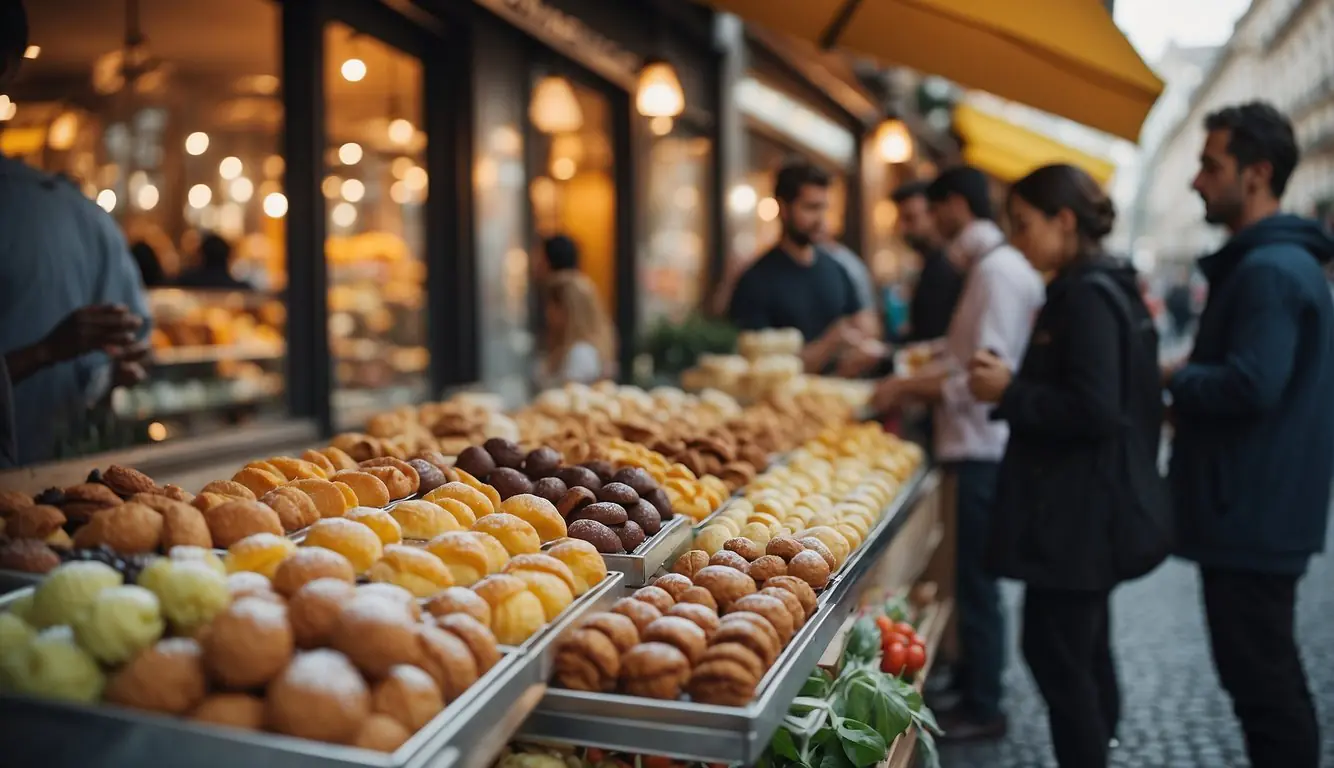
In Milan, the art of sweet indulgence is taken very seriously, with a variety of sugary treats that range from traditional pasticcerias to innovative gelato flavors.
Milan’s Patisserie Culture
Our first stop within Milan’s dessert landscape is the pasticceria, a hub for exquisite Italian pastries. One can hardly speak of Milanese sweets without mentioning Panettone, a traditional Christmas treat that has become a year-round delicacy. Revered for its fluffy texture and candied fruit pieces, it is a testament to Milan’s rich culinary heritage. Another sweet highlight includes cannoli, which, while more closely associated with Sicilian cuisine, have found a loving home in the pasticcerias of Milan. These crisp pastry shells filled with a sweet, creamy mixture, often enriched with pistachio paste or dotted with chocolate chips, are a beloved indulgence.
If you’re looking to sample the best of Milan’s patisserie offerings or learn about Milan’s twist on these traditional desserts, consider exploring options at Pavè Milano, known for their array of delectable pastries.
End a Milanese Meal with Dolce
No Milanese meal is complete without a dolce, or dessert. Amongst the most sought-after endings to a meal is gelato, Italian ice cream known for its dense, rich flavor and velvety texture. Artisanal gelato shops across the city offer an endless variety of flavors, with pistachio often being a crowd favorite for its nutty and sweet, yet not overpowering taste.
For those who prefer something less cold but equally delightful, supplì — though traditionally a savory street food snack — can also appear in sweet variations, making for a unique Milanese treat. Filled with anything from custard to chocolate, they embody the playful spirit of Milan’s street food scene.
Discover the countless flavors of Milanese gelato and learn about the process of making this creamy dessert at local favorites such as Gelato Giusto.
Conclusion
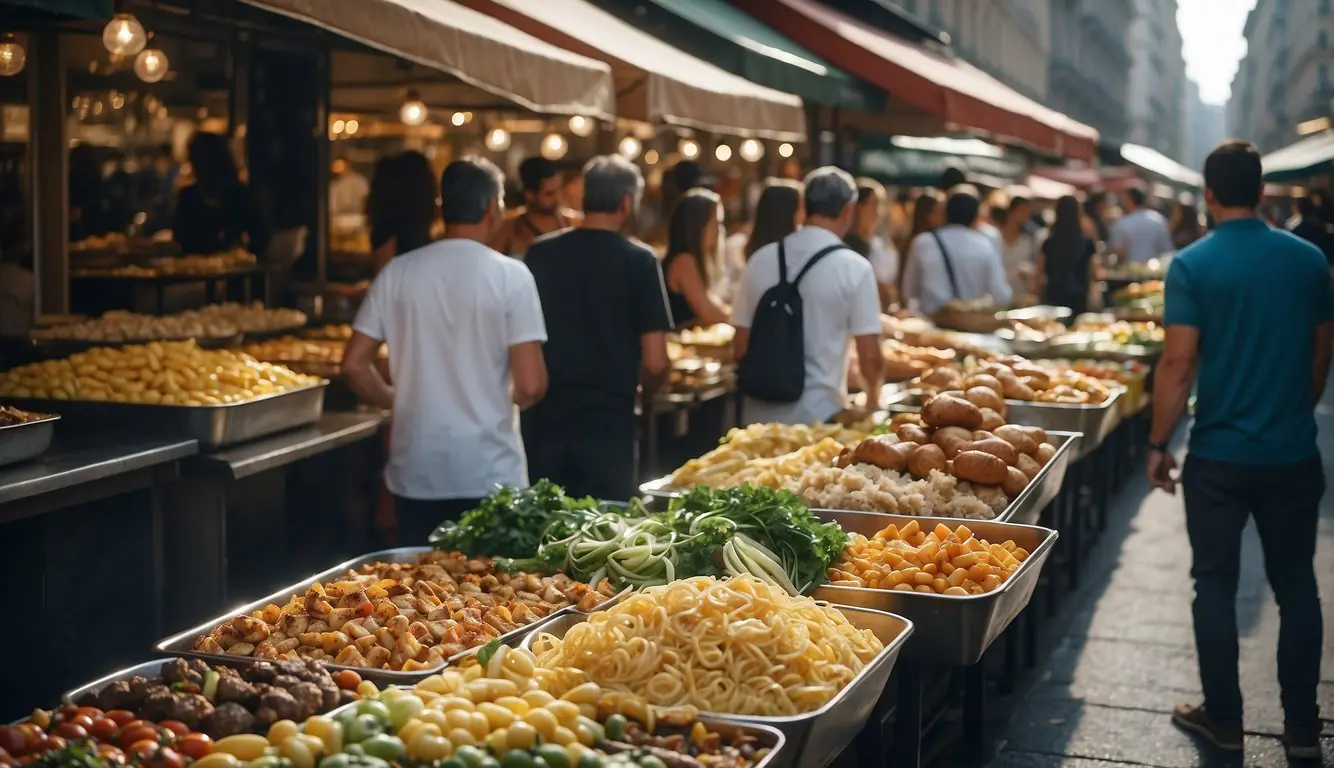
Milan’s street food landscape is as eclectic as it is delicious, reflecting the city’s reputation as a culinary hub. We witness a variety of flavors from savory panini to sweet gelato, ensuring there’s a taste for every palate. Our journey through these streets introduces us to traditional bites like the arancini and piadina, as well as creative twists at food trucks and kiosks.
In Milan, we appreciate the art of quick, flavorful meals that define the essence of Italian street cuisine. Each bite is a testament to the city’s passion for good food made accessible to everyone wandering its bustling piazzas and narrow alleys. Through establishments like Ravioleria Sarpi, we embrace the authentic Italian experience served within the confines of a casual setting.
Milan invites us to explore its gastronomy with a spirit of adventure, promising new and exciting flavors at every corner. We take away not just a meal, but memories from the heart of Italy’s fashion capital, where food serves as both sustenance and joy.
In short, our exploration of Milan’s street food is both an adventure in taste and a cultural journey that stays with us long after the last bite.
Frequently Asked Questions
Exploring the street food in Milan reveals a world of flavor that’s integral to experiencing the city’s culture. Join us as we answer some of the most common queries that visitors have about this delicious aspect of Milanese life.
What are the top street foods one must try in Milan?
In Milan, one cannot miss the iconic panzerotti at Luini, offering a heavenly bite with its crispy outside and molten cheese and tomato filling. Another must-try is the risotto al salto, a golden-fried rice dish beautifully encapsulating the essence of traditional Milanese risotto.
Where can I find the best street food markets in Milan?
For an authentic street food market experience, Mercato Metropolitano is a top choice that highlights the sustainable food culture with a vast selection of local and international treats. Another notable mention is Mercato di Via Fauche, celebrated for its fresh produce and delightful street snacks.
Can you highlight some hidden gems for street food in Milan?
One of Milan’s lesser-known spots is the Ravioleria Sarpi, nestled within the city’s bustling Chinatown. Here, you can savor the taste of freshly-made Chinese dumplings. Additionally, Trapizzino Porta Romana offers the unique trapizzino: a pocket of pizza dough filled with classic Roman stews and sauces.
Which areas in Milan are known for their vibrant street food culture?
The streets of the Navigli district are known for their vibrant atmosphere and wide variety of street food, from classic Italian sandwiches to artisanal gelato. Via Paolo Sarpi, Milan’s own Chinatown, is another vibrant hub where one can enjoy an eclectic mix of Asian and Italian street eats.
How does Milan’s street food scene compare to other Italian cities?
Milan’s street food offers a diverse array of both classic Italian fare and innovative culinary creations that reflect the city’s cosmopolitan nature. While cities like Naples and Rome have strong street food traditions, Milan’s scene stands out for its fashion-forward, modern approach intertwined with time-honored Italian staples.
What unique street food experiences are offered in Milan?
Milan offers the chance to dive into a street food walking tour, which not only allows sampling a variety of local delicacies but also immerses food lovers in the historical and cultural narratives that define Milan’s food scene. Participants can gain firsthand knowledge of Milanese culinary heritage and its current evolution.
